“Hey Mark, check out these little loons!”
Garth, a Parks Canada resource conservation staffer, had just walked into my office. On his camera were photos of a couple of small, black, fuzzy loon babies.
Rescuing injured, lost or otherwise needy birds was not all that unusual for Parks staff, but the location was curious. These youngsters were found at a cabin about 50 metres from the shore of Lake Edith. How, I thought, did young loons wander so far from water?
Loons are among the most aquatic of birds. They pursue their prey underwater, using their powerful legs for propulsion. In the name of efficiency, evolution has repositioned loons’ legs so far back on their bodies that they can no longer walk on land. In fact, they can’t even stand. The only time you will see a loon on land is when it is sitting on a nest. It gets there by sort of tobogganing on its chest.
Loons’ legs are positioned so far back on their bodies that they can’t walk. // Mark Bradley
So what were those Lake Edith loon chicks doing so far from the water’s edge? Clearly, further investigation was warranted.
Common Loon, uncommon biology
There are four species of loon regularly seen in Canada: the Common Loon (which we have here in Jasper), the Red-throated loon, the Pacific Loon and the Yellow-billed Loon. All loons winter on the ocean, but breed on freshwater ponds, however, our Common Loon is the only one which breeds south of the arctic regions.
Given their roughly-similar body plan, you might think that loons are related to ducks. This is what scientists thought as well, until about 20 years ago, when a genetic study revealed that loons are related to penguins. Ducks, as it turns out, are more closely related to chickens. When unrelated groups like loons and ducks change to resemble each other in some way, the process is called convergent evolution.
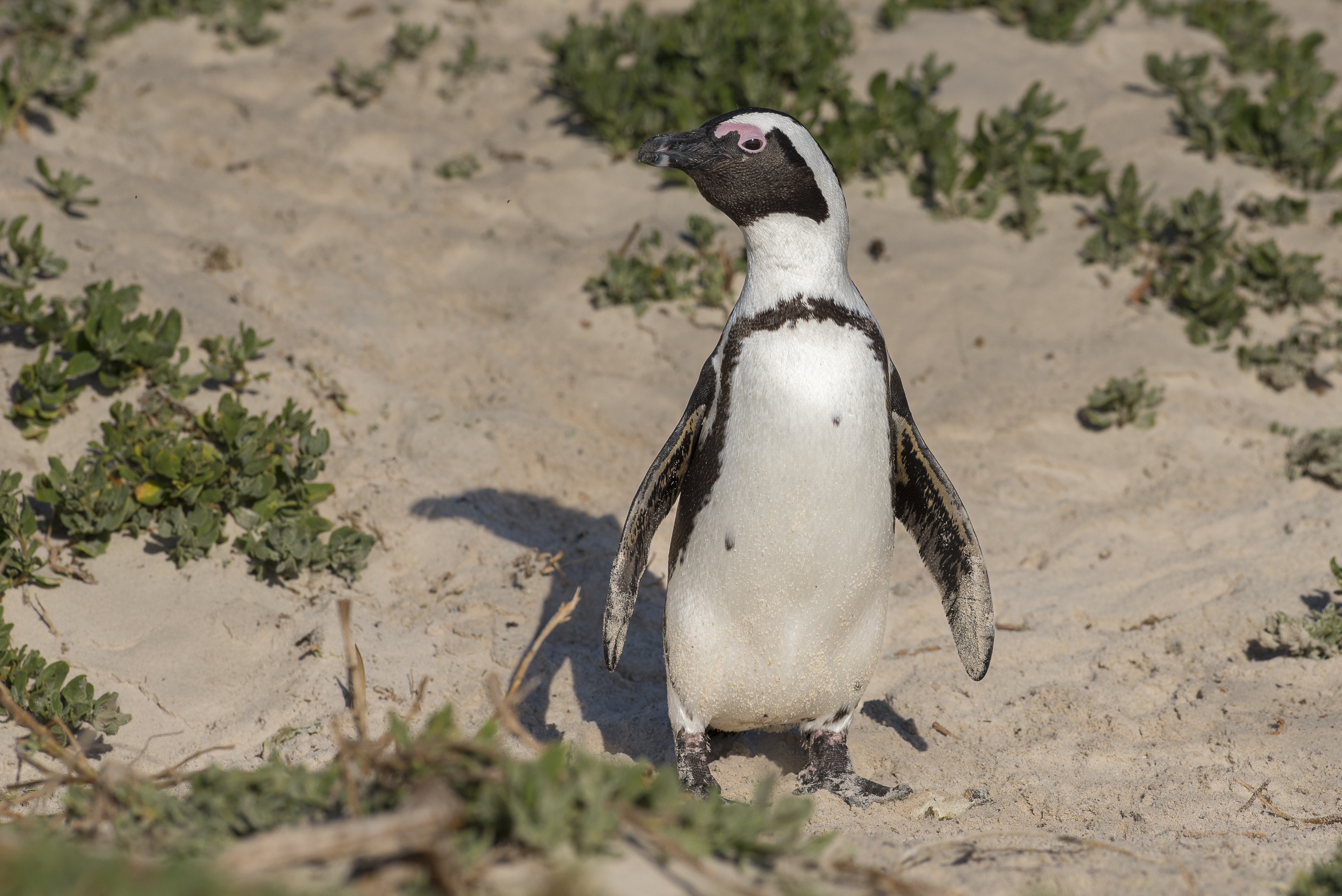
An African Penguin demonstrates his walking skills near Cape Town in South Africa. // Mark Bradley
While penguins and loons are related, they have become less similar over time: penguins lost the ability to fly (but swim with their wings), while loons lost the ability to walk. This is known as divergent evolution.
What loons and penguins do have in common is that they eat fish (or other underwater creatures) and, unless they are laying eggs or rearing young, almost never leave the water. Another curious fact is penguins only live south of the equator, while loons live only in the north. Fossil evidence shows that millions of years ago, loon ancestors lived in the south as well, so it’s thought that loons may have moved north (because they could still fly) to escape competition from the penguins—too many birds at the sushi bar!
In solid-arity
Another similarity between loons and penguins is that unlike most birds, their bones are not hollow. Most birds that fly require exceptionally strong, yet lightweight bones. Bones with hollow cores achieve this. However, being almost completely aquatic, penguins and loons don’t have to be so weightless. Penguins and loons are the only birds with completely solid bones.
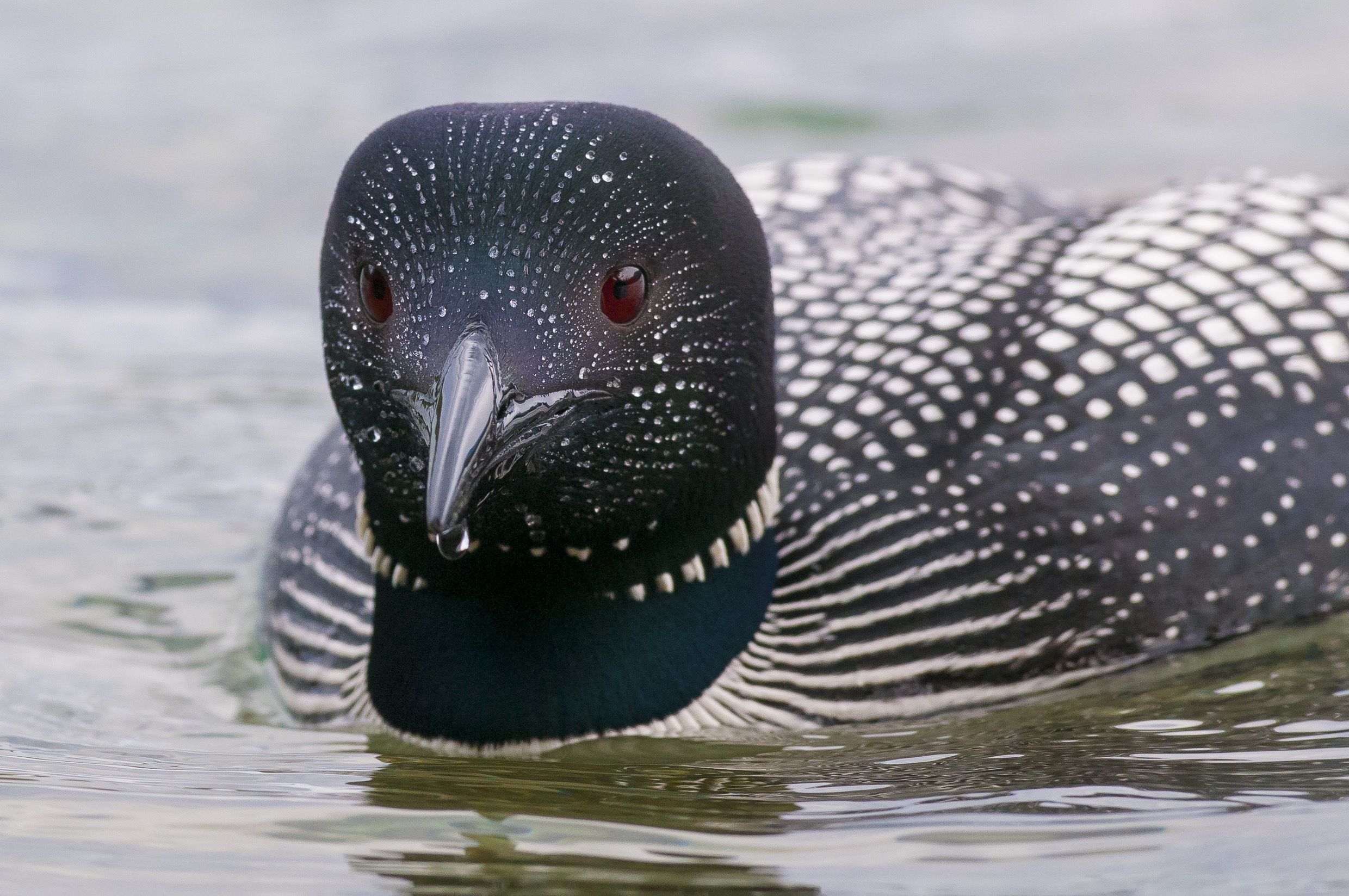
Common Loon emerging from a dive. Lac Beauvert, Jasper National Park. // Mark Bradley
Despite this trait, loons are capable fliers. They use this ability to move between the freshwater bodies of water that they nest and feed in. Those heavy bones, however, mean that loons need a long runway on the water; you’ll never see a loon on a small pond because it could never take off! This requirement occasionally leads to trouble, especially for young loons that are just getting their pilot’s license. Moreover, on hot days, loons can get fooled by heat mirages on paved roads, and they may try to land on them. This of course does not end well because even if they survive the landing, they are unable to take off again.
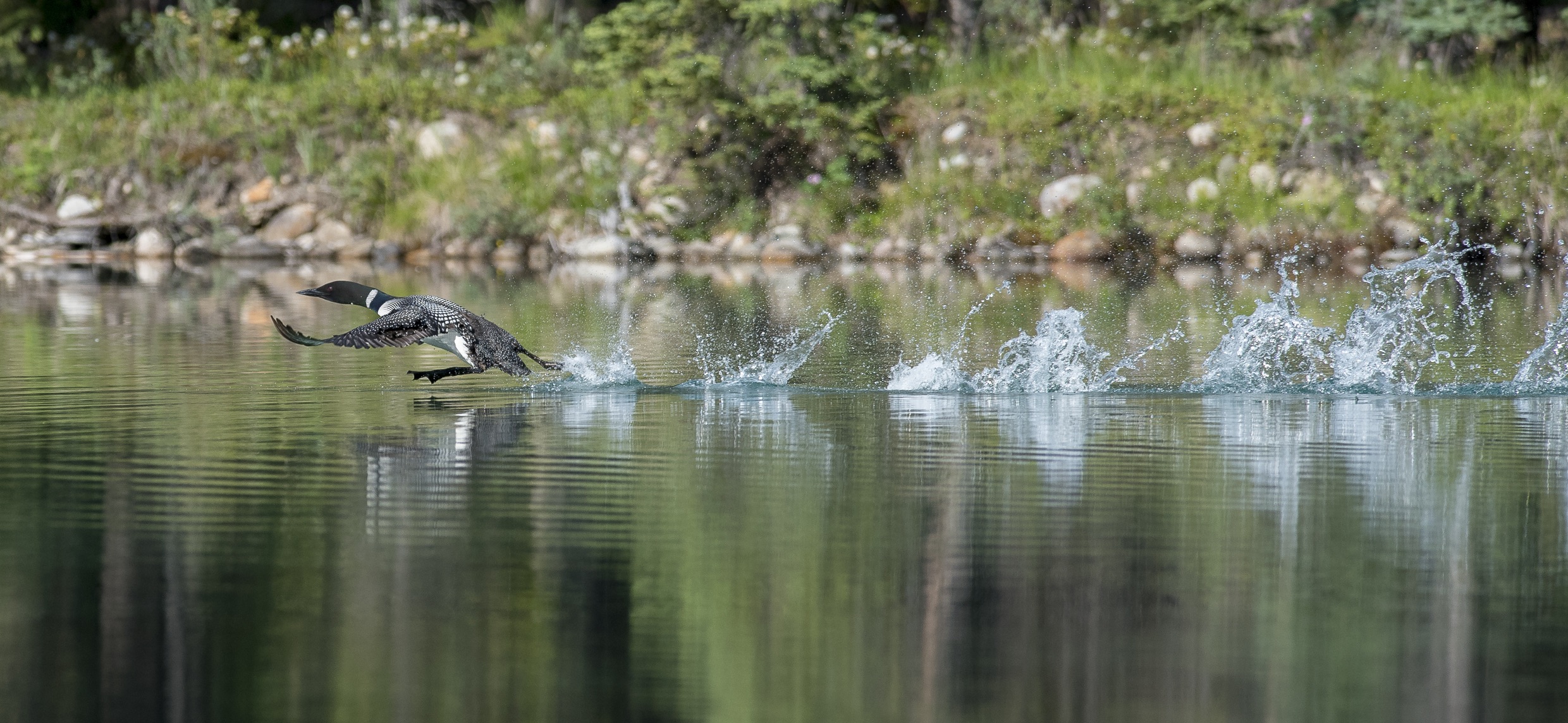
A loon using all of his runway on Lac Beauvert. // Mark Bradley
This very situation arose in 2010, when someone reported a young loon stranded on a stretch of the Pyramid Lake Road. After my Parks Canada colleague, veterinarian Geoff Skinner, examined the hapless youngster and determined that no bones were broken, we boxed him up and drove him to Patricia Lake, where he swam off, none the worse for wear.
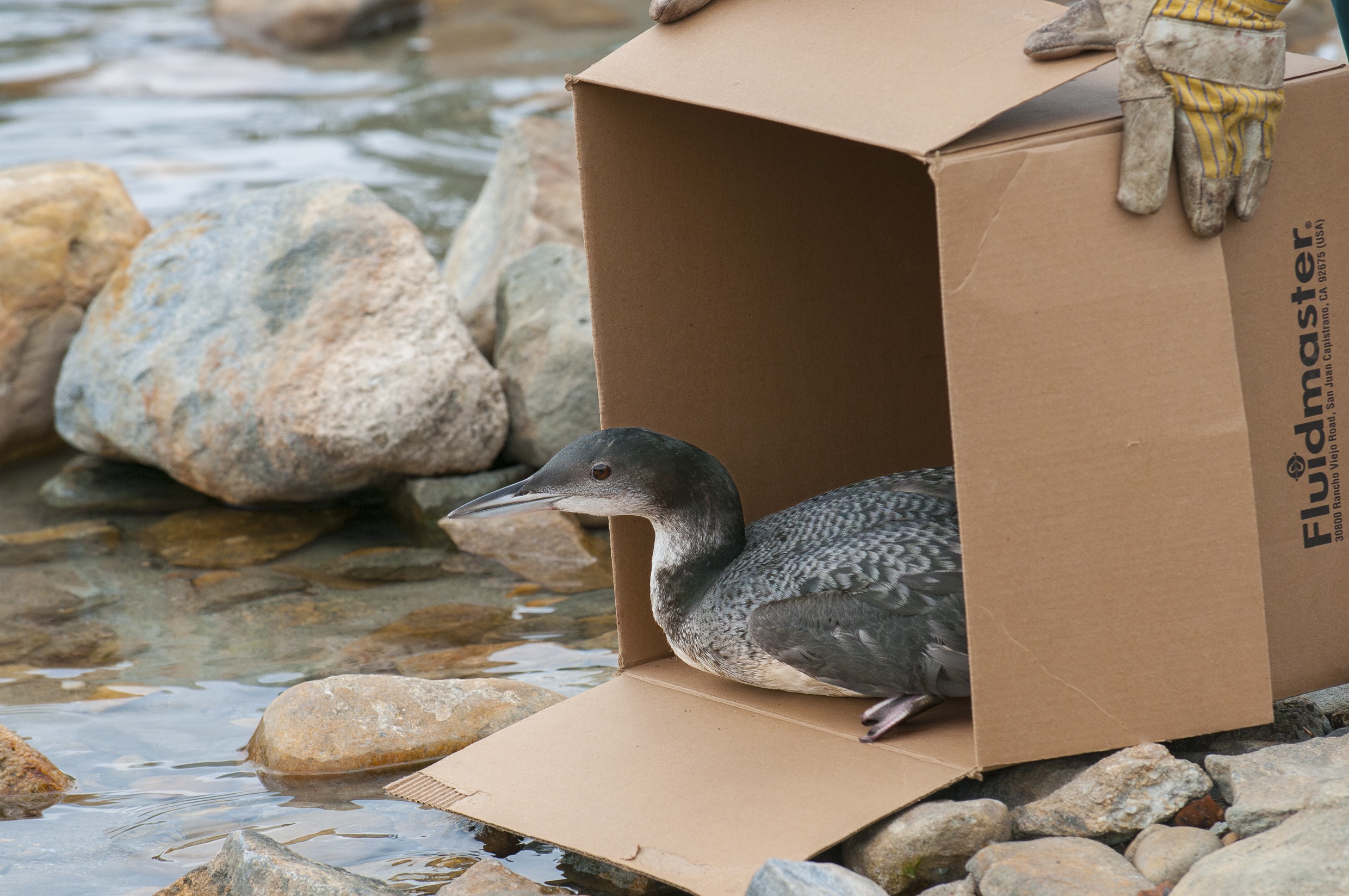
A Common Loon in juvenile plumage, being released in Patricia Lake. // Mark Bradley
Large and in charge
Common Loons are much bigger than you may think. Although they look small because they are always in the water—and as divers, much of their body is underwater— they are actually as heavy as a Canada Goose, weighing as much as 12 pounds.
Loons are one of the top predators of the freshwater lakes that they live on. This means loons rely on clean, clear water, with uncontaminated prey. Pollutants in the water accumulate as they move up the food chain—aquatic insects ingest or absorb toxins, small fish eat the insects, then the loons eat the fish. Those toxins become concentrated; loons have been known to carry heavy loads of mercury and DDT. Luckily, Jasper’s loons are spared most toxins by living in a national park, but they are still vulnerable to chemicals like PCBs (poly-chlorinated biphenyls), which can travel thousands of miles through the air before falling into the water.
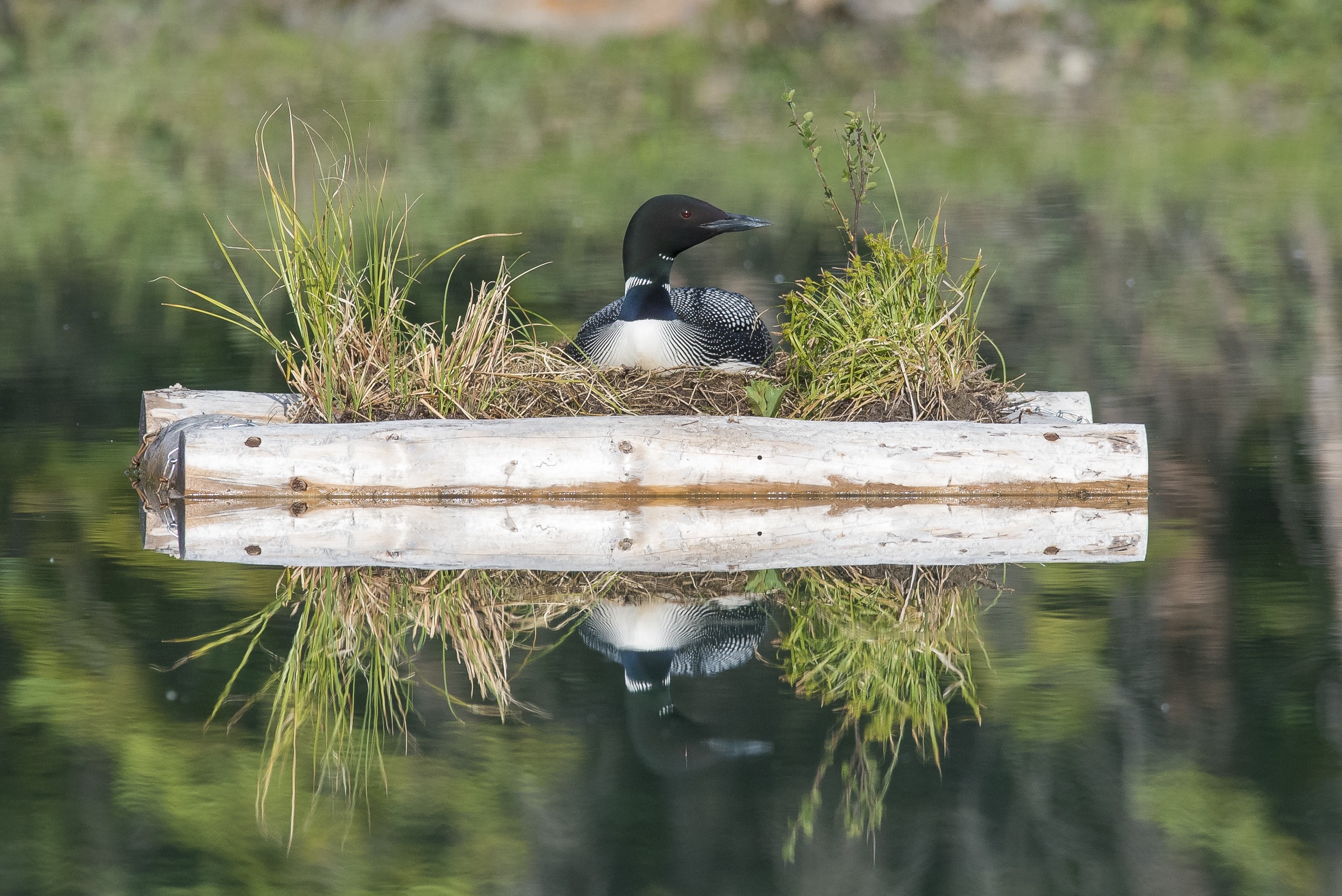
Location, location, location. A loon on eggs enjoys her human-made real estate. // Mark Bradley
Common Loons love the same clear, fish-filled waters that people love, and for the most part they have learned to live with us—with one exception. Loons must have a disturbance-free place to incubate their eggs during their month on land. Small islands are the best places, because it keeps them away from people (and their dogs), as well as land-based predators. If there are no islands, they will nest on shorelines.
Some years ago, in Jasper, we had two island-free lakes—Pyramid and Beauvert—where disturbances were regularly preventing successful loon nesting. To overcome this unnatural interference, Ward Hughson, the now-retired aquatics biologist for Jasper National Park, installed artificial islands near the unsuccessful nests. These bespoke little islands have produced loon chicks every year since! Loon chicks typically leave their nest after about 24 hours and either swim or ride on their parent’s backs, so at that point the parents and chicks can more easily evade predators and humans alike. Loons lay two eggs and both parents incubate the eggs and feed the chicks.
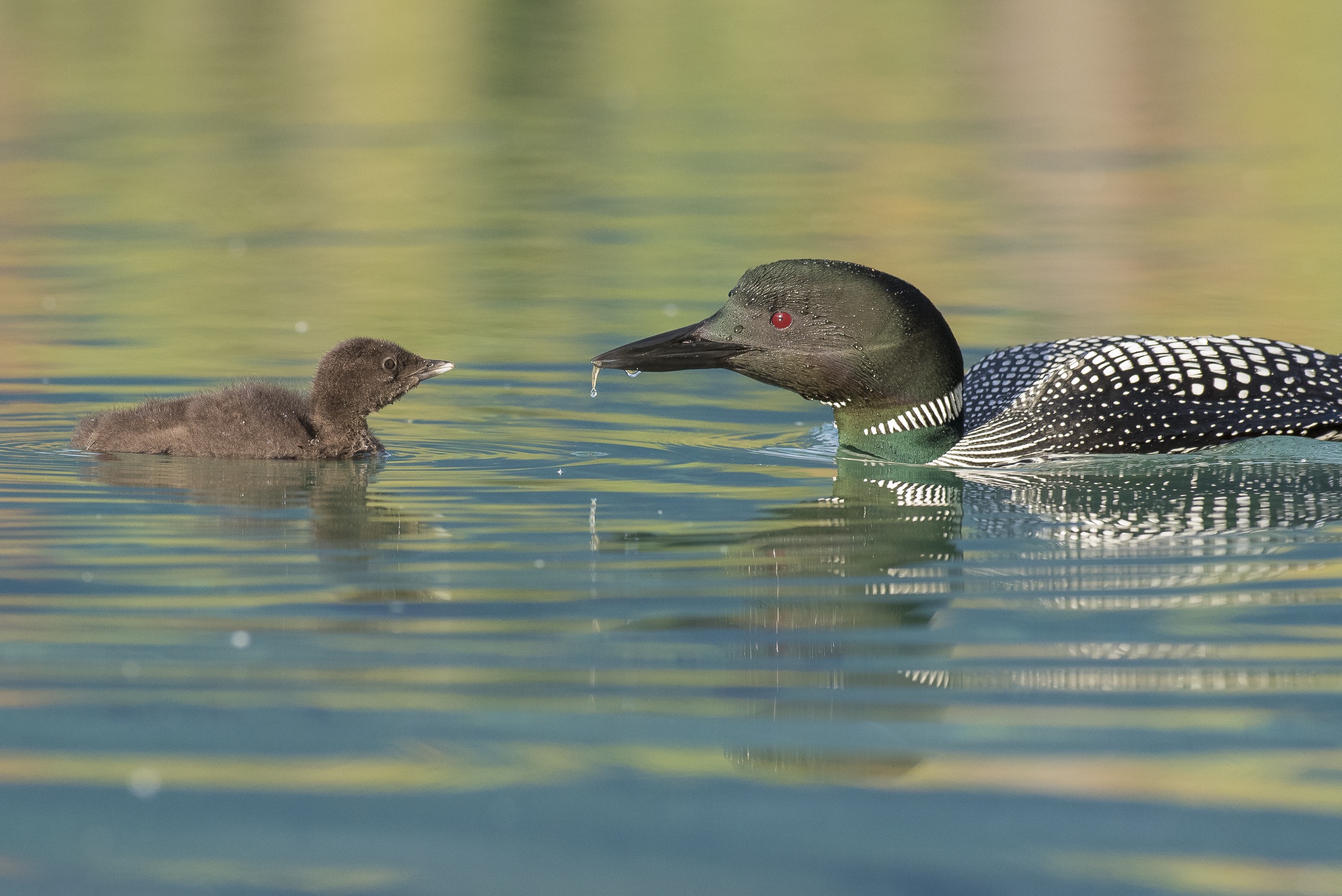
Common Loon feeding her young at first light. Jasper National Park, AB, Canada. // Mark Bradley
Zoinks!
Which brings us back to Lake Edith. Like Scooby-Doo and the gang, Garth and I had split up and were searching for clues to the mystery of the wandering loon chicks. We could see the adult loons swimming nearby, but there was no smoking gun in sight. Just then, a dog rounded the corner of the nearest cabin. It was a German wirehaired pointer. Pointers have been bred since the late 1800s to retrieve birds for hunters, and are renowned for their “soft” mouths, meaning they are very gentle when carrying their birds. This of course keeps them from spoiling their owners’ waterfowl dinner. Luckily this trait meant that when the dog “retrieved” the loon chicks to his owner’s cabin, the chicks were completely unharmed.
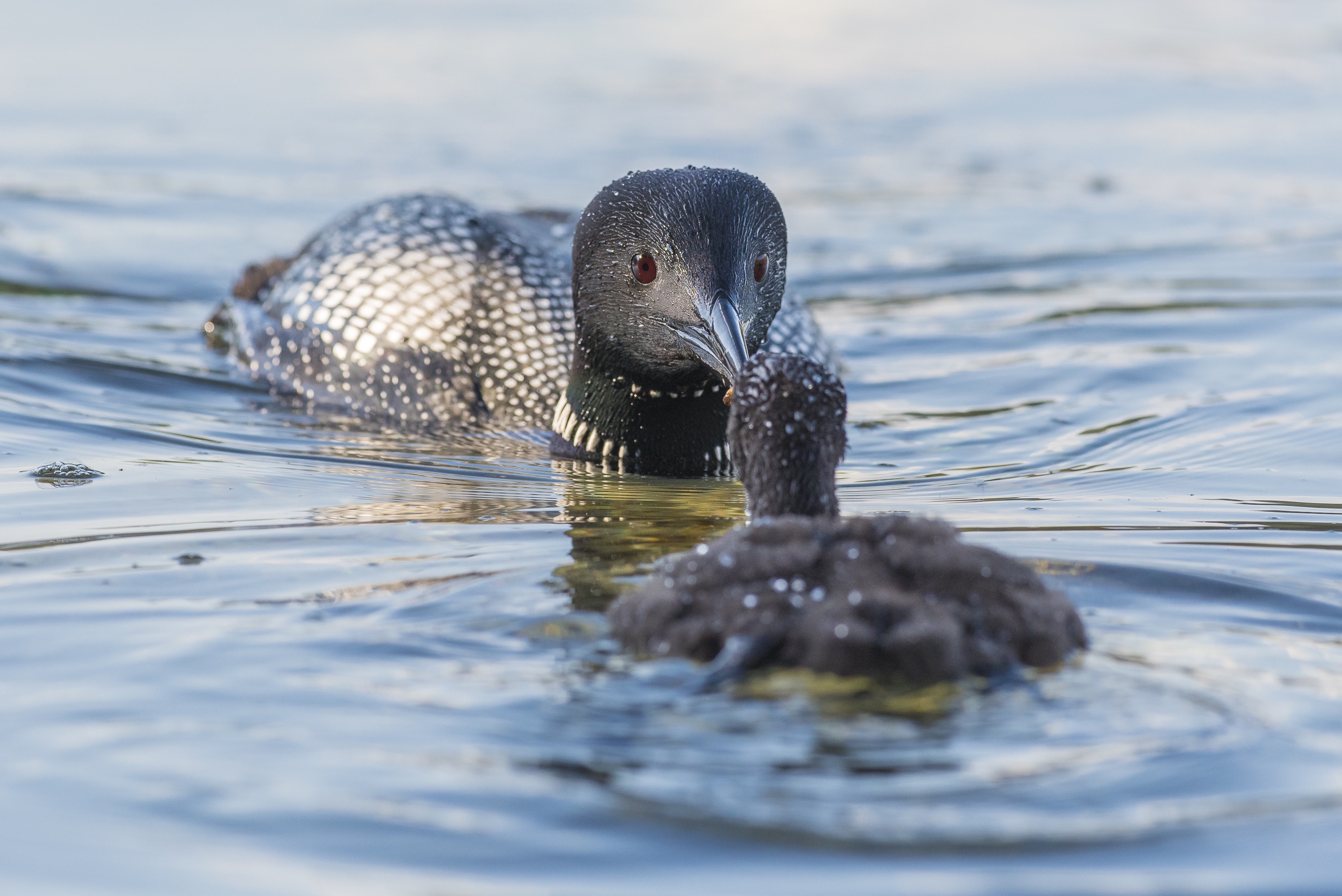
A loon parent feeding its chick. // Mark Bradley
We could see the loon parents nervously patrolling back and forth in front of the cabin, but once we put the chicks back in the water, it was no time at all before they were all re-united and swimming off into the sunset.
Mystery solved.
Mark Bradley // thejasperlocal@gmail.com


